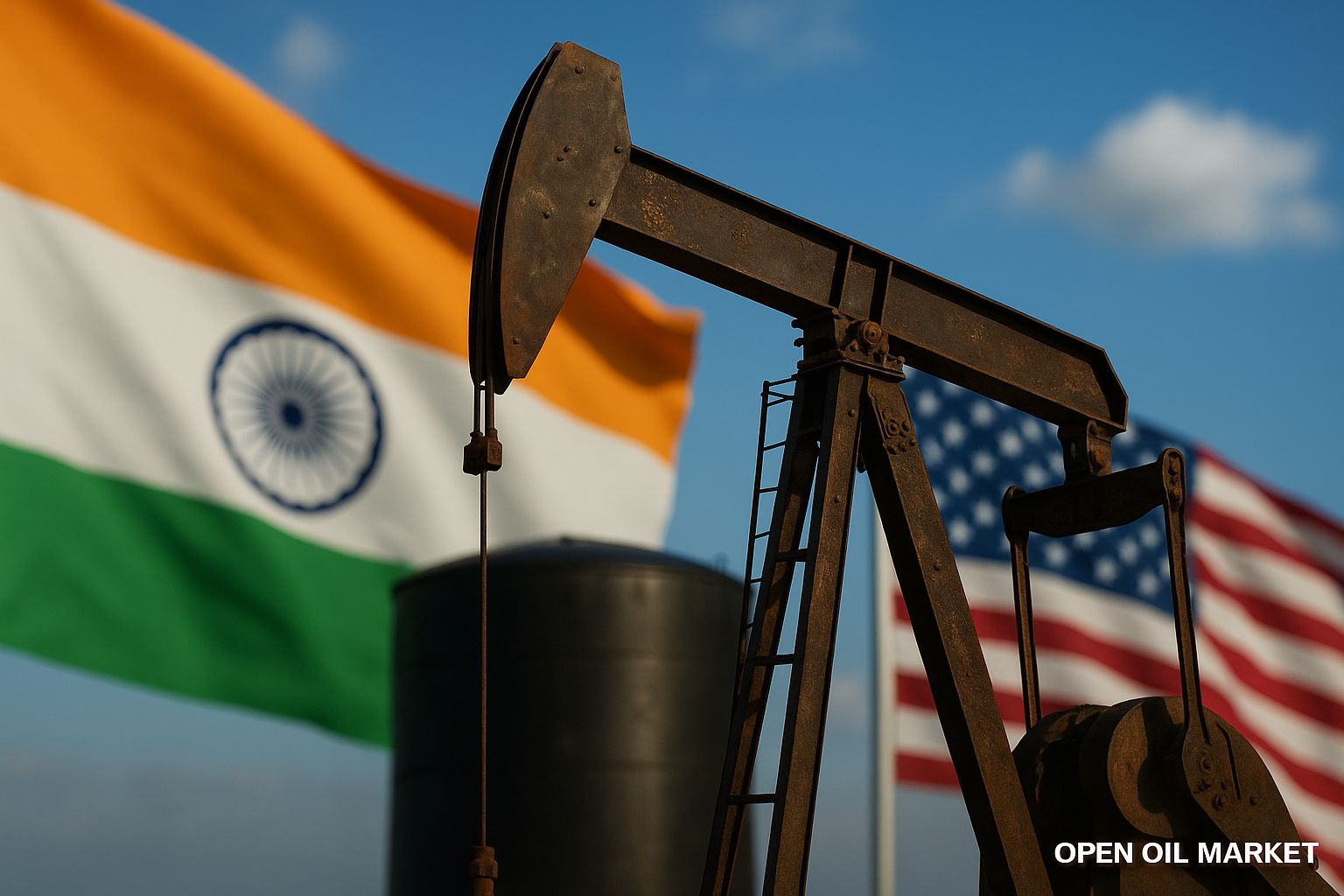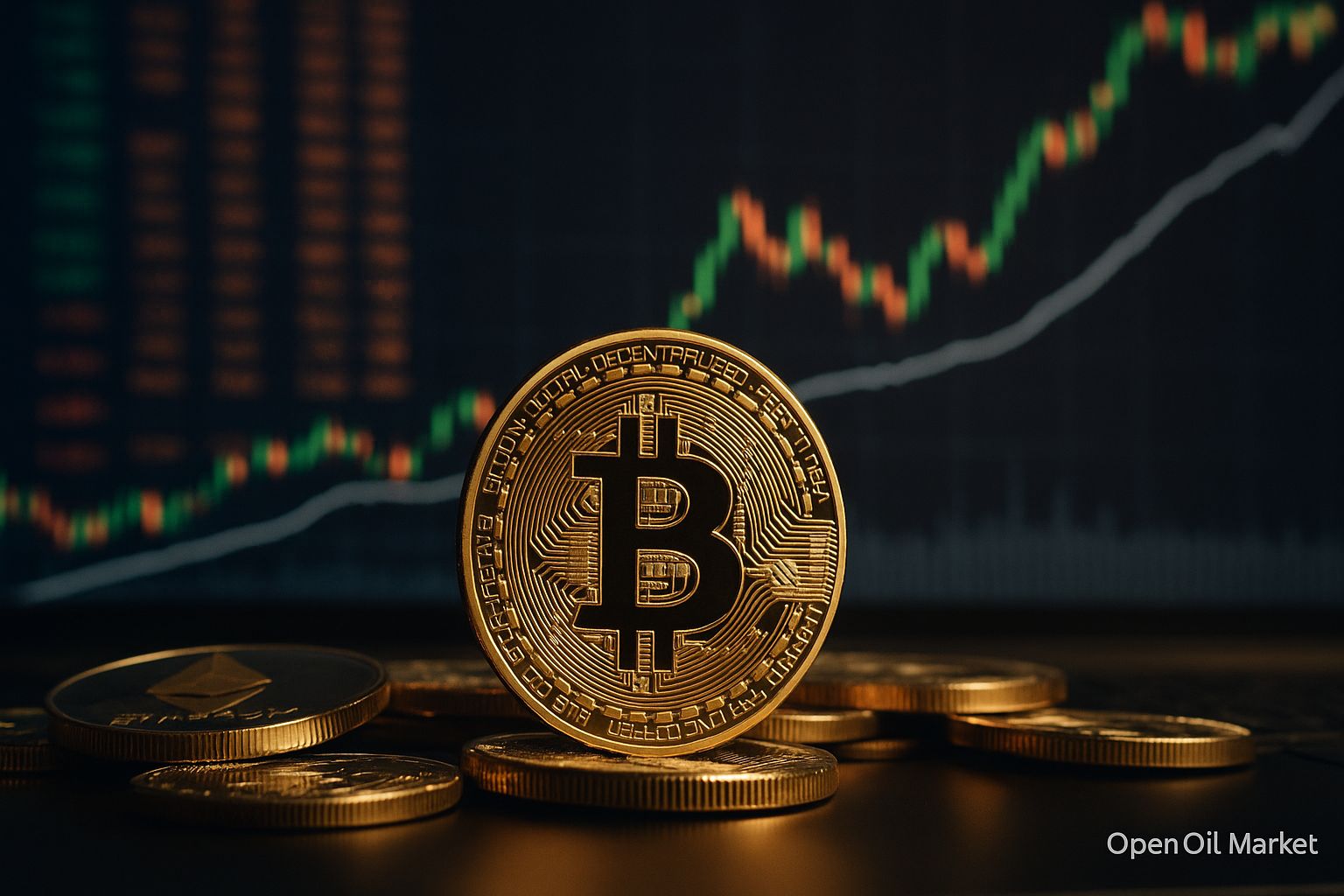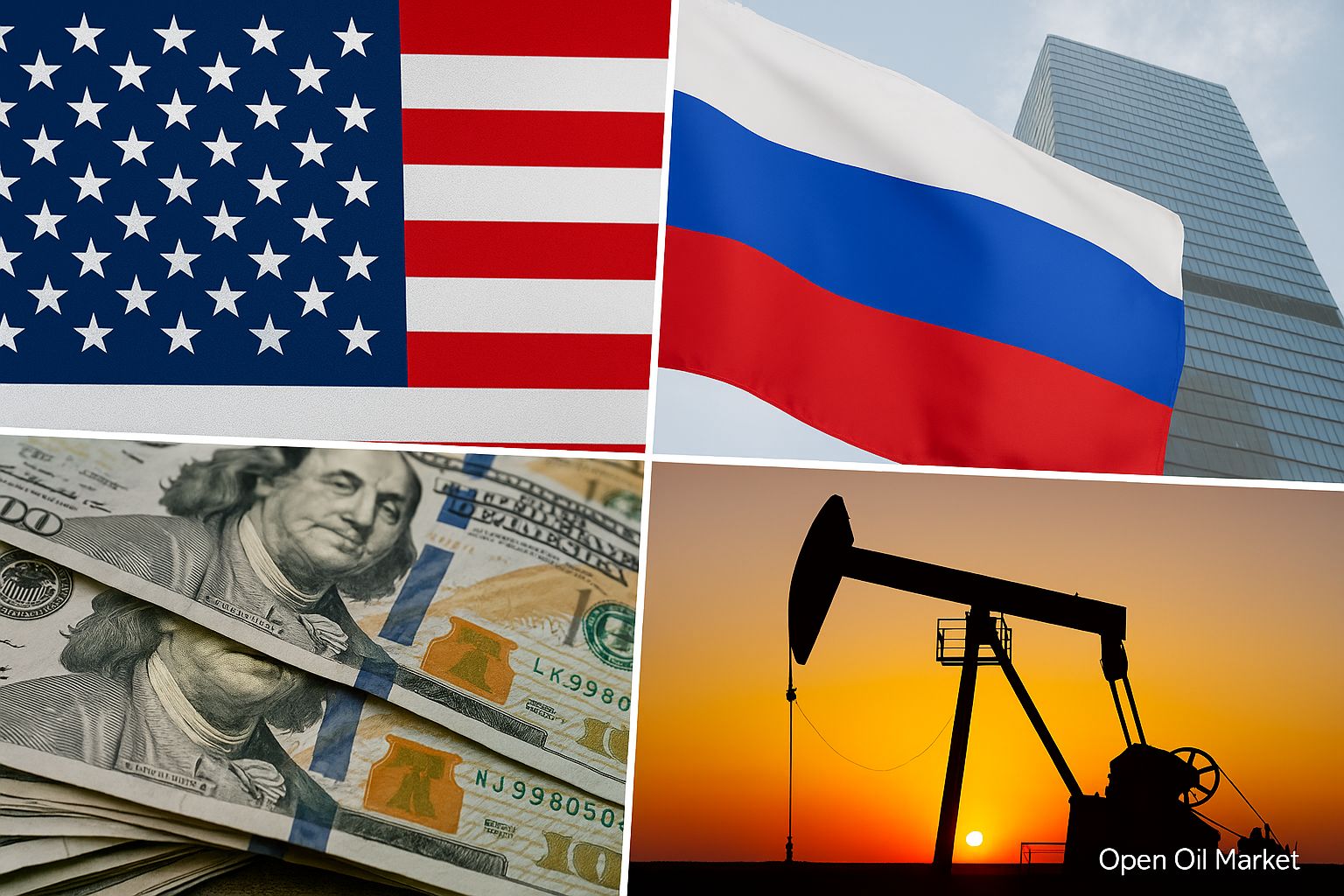
Global Economic and Financial Overview as of August 9, 2025: US Trade Wars, Negotiations with Russia, Soft Policies by the Federal Reserve and Bank of England, Market Dynamics and Reports from Major Companies.
Global markets are showing mixed dynamics against the backdrop of escalating trade conflicts and flickers of hope for the resolution of geopolitical crises. Investors are evaluating the new US tariffs and the threat of sanctions on one hand, and the potential for a peace deal among major powers on the other. The business environment remains tense, but signs of eased monetary policy and strong corporate earnings are sustaining confidence among market participants.
US Trade Wars: New Tariffs and Countermeasures
This week, the United States took decisive steps in escalating trade wars. President Donald Trump imposed additional tariffs on imports of high-tech products and intermediates:
- 100% tariff on imported semiconductors and microchips if their production is outsourced beyond the US (American manufacturers are exempt from these duties);
- 40% tariff on goods re-exported through third countries to circumvent existing trade restrictions – a measure primarily aimed at counteracting the transit schemes of Chinese goods through Southeast Asia;
- 25% additional tariff on goods from countries that continue to actively purchase Russian oil (India is already affected, with other major importers likely to follow).
These steps are the US response to protracted negotiations with China and the reluctance of several countries to uphold sanctioning pressure on Russia. The White House has set a deadline of August 12 for reaching a trade agreement with Beijing; otherwise, even stricter import tariffs will come into effect (total rates could exceed 100%). According to customs statistics, Chinese producers increased their exports in July by +7.2% YoY, likely accelerating shipments ahead of new barriers. Meanwhile, Chinese exports to the US decreased by approximately 22%, while shipments to ASEAN countries grew by nearly 17%, indicating a shift in trade flows.
Markets reacted with volatility: sector rotation intensified on Wall Street – the Nasdaq index, rich in technology companies, strengthened on expectations of support for domestic chipmakers, while industrial indicators fell due to fears of rising costs. Investors expect major American corporations to adapt: some, like chip manufacturers, could even benefit from protectionism, while companies reliant on imported components will face margin pressures.
Ukraine Ultimatum and Leader Meeting: Sanction Risks Easing
The political agenda at the end of the week provided another cause for nervousness in financial markets. August 8 marked the deadline for the ultimatum previously issued by the US to Russia: Washington demanded a ceasefire in Ukraine, threatening new sanctions otherwise. According to President Trump, secondary sanctions and nearly 100% tariffs could be imposed on Russia and partner countries trading with it. Energy and technology sectors, as well as international carriers involved in the "shadow fleet" exporting Russian oil, may be at risk.
Nonetheless, the geopolitical tension eased somewhat Friday evening with news of potential dialogue. The US administration and the Kremlin confirmed preparations for a meeting between Donald Trump and Vladimir Putin at the end of next week. Media reports suggest discussions on a framework agreement for a ceasefire in Ukraine, involving the freezing of the conflict and establishing current lines of control. These signals have rekindled hopes for compromise. As a result, investors reassessed their most pessimistic scenarios: shares of defense sector companies on Western exchanges decreased (a sign of belief in the potential reduction of military risks), while emerging market assets rallied.
The Russian market reacted particularly vigorously: the Moscow Exchange index surged on news of upcoming negotiations, recording an intraday rise of up to +4% and closing with an increase of about +1.5–2%. The ruble, which had previously come under pressure due to the threat of secondary sanctions (the dollar rose above 79.5 ₽), stabilized closer to the 79 ₽/$ mark. Investors expect that a possible deal between Moscow and Washington will prevent the harshest restrictions, supporting Russia's commodity exports and the country's financial system.
Monetary Policy: Fed on Hold, Bank of England Cuts Rates
The macroeconomic backdrop has shifted toward easing monetary policy. At its meeting on July 30, the Federal Reserve maintained its base rate at 4.25–4.50% for the fifth consecutive time, signaling a prolonged pause. Despite inflation still being relatively high (around 3% according to the core PCE index), the Fed noted a slowdown in economic growth (the forecast for US GDP growth in 2025 has been revised downward to approximately 1.4%) and a moderate cooling in the labor market. Fresh data on unemployment claims (rising to 226,000 for the week) and weak new job creation dynamics have bolstered expectations that the regulator may move to cut rates as early as September. An additional factor is the personnel changes: Donald Trump has nominated economist Stephen Miran, a known proponent of soft monetary policy, for the vacant seat on the Fed’s Board of Governors. This has strengthened market confidence in a "dovish" stance by the US central bank in the coming months.
In Europe, a shift in rate policy is also emerging. The Bank of England unexpectedly lowered its key rate from 4.25% to 4.00%, marking the beginning of a softening cycle for the first time in two years. Although the decision was accompanied by cautious comments – the British regulator emphasized the need to keep inflation in check (in the UK, it still exceeds the target of 2% despite a slowdown) – markets reacted positively to this move. The pound held steady at two-week highs, as the rate cut was perceived as "hawkish" (with signals of a possible pause in further cuts if inflation does not slow significantly). The European Central Bank, for its part, has paused any changes to rates while monitoring incoming data: price pressures in the eurozone are easing, but there remains a risk of recession given the impact of expensive credit on business activity.
Currency and commodity markets reflected expectations of soft policy: the DXY dollar index decreased amid rising expectations of an interest rate cut by the Fed, particularly evident in the dollar’s decrease against the yen (falling to ¥147 per $1) and the franc. The euro remains around $1.10. At the same time, precious metal prices reached new peaks – gold rose to record $2000+ per ounce, attracting investors as a "safe haven" amid trade and geopolitical risks. Silver is also increasing, albeit more moderately. The oil market, however, remains jittery: Brent and WTI prices fell over the week (Brent down to ~$67 per barrel, WTI to ~$64) amidst conflicting factors. On one hand, threats of sanctions against Russian oil exports could reduce market supply, while on the other, concerns over slowing global economic demand and weak demand from China are pressuring prices. Consequently, oil traders have taken a wait-and-see approach, monitoring news from Washington and Moscow.
Stock Markets: Growth in the West and Mixed Dynamics in Asia
Despite alarming headlines, Western stock indices ended the week on a positive note. In the US, the S&P 500 and Dow Jones gained approximately +1–1.5% for the week, partly recovering from last week’s decline. The tech-heavy Nasdaq Composite even reached a historic high on Thursday, showing a rise of about +3% for the week, buoyed by rallying chip makers and IT giants. Investors seem to be pricing in an imminent rate cut and potential easing of trade disputes through negotiations. European exchanges also rose: the pan-European STOXX 600 grew by +0.2% on Friday and +2.2% for the week – marking the best weekly result in three months. The bank stocks led the gains: the European banking index added nearly +2% in a day and has soared an impressive +57% since the beginning of the year. Europe’s banking sector benefits from two fronts – high rates (before the current reduction) and an influx of investor capital seeking refuge from global trade risks in locally oriented assets. Additionally, successful quarterly results from several European credit institutions have served as a further driver.
Amid discussions of a possible ceasefire, shares of European defense companies decreased (the sector dropped about -0.8% for the day, though it remains among the leaders of growth since the start of the year, +51% since January). Attention was also drawn to individual issuers: shares of the German reinsurer Munich Re fell by 7% after a warning of reduced annual revenue forecasts, while Belgian Lotus Bakeries soared by +11% on strong first-half results (the best daily growth in over a year and a half).
Asian markets exhibited mixed dynamics. Japan’s Nikkei 225 surged over +2%, reaching 41,900 points – a multi-month high. Japanese exporters and tech companies were in demand: investors anticipate that potential US tariffs will bypass Japanese electronics manufacturers, and the weakening yen will enhance their competitiveness. Major Japanese corporations surprised with positive earnings reports: SoftBank Group posted unexpectedly high profits, and its stock surged by +11%, while Sony Corp raised its annual forecast – its shares jumped by +6%, and Fast Retailing (operator of Uniqlo) increased by around +3%. Meanwhile, Chinese exchanges and Hong Kong remained under pressure. The Hang Seng index fell by -0.8%, while the Shanghai Composite closed around zero. Investors are worried about the prospects of a protracted trade standoff with the US and signs of deflation in China’s economy. Encouraging July export data from China somewhat eased sentiment but uncertainty regarding the agreement by August 12 is holding back activity. Other Asia-Pacific markets moved in different directions: Australia declined amid a slump in resource stocks, while India and Indonesia showed slight gains.
US Corporate Earnings Reports: Surprises in Quarterly Results
The ongoing quarterly earnings season has brought investors mixed news from major US companies. Attention was drawn to both the technology sector and the healthcare and consumer services industries. Some key results include:
- Becton Dickinson (BDX): The medical equipment manufacturer exceeded profit expectations ($3.68 per share versus projected ~$3.40) and revenue, showing the best quarterly growth in over a decade. BDX shares reacted by rising nearly 5% – the strongest one-day jump since 2006.
- DoorDash (DASH): The food delivery service recorded impressive revenue growth (+20% year-over-year) and unexpectedly high profits ($0.65 per share against a projection of ~$0.45). The report was a “double beat” (exceeding both profit and revenue forecasts), which caused DoorDash shares to jump by 5% and hit an all-time high. Management maintains an optimistic outlook, noting a record number of subscribers and improving metrics for each active user.
- Fortinet (FTNT): The cybersecurity software developer, on the other hand, faced its worst market reaction in two years. Despite surpassing revenue expectations (~$1.63 billion, +25% YoY) and profit ($0.64 per share against expectations of $0.59), a cautious forecast and signs of demand saturation led to a sell-off in shares. Fortinet shares plummeted nearly 9%, signaling investor disappointment with subscription growth rates.
- Eli Lilly (LLY): The pharmaceutical giant reported mixed results: revenue significantly exceeded expectations ($15.56 billion vs $14.7 billion), primarily due to high demand for diabetes and obesity medications (Mounjaro and others), but earnings per share ($5.60) disappointed market expectations ($6.30). Additional negativity came with news that a major US insurer (CVS) excluded the new drug Zepbound from its list, potentially limiting sales. As a result, Lilly shares fell by more than 14% – the worst post-earnings drop in the company’s history. Investors are taking profits after a rally in the GLP-1 drug sector and waiting for clearer forecasts.
- The Trade Desk (TTD): The ad platform developer shocked the market with a cautious forecast, citing the impact of trade disputes. While revenue in Q2 grew nearly +19% (to $694 million) and slightly exceeded expectations, management noted that large advertisers are cutting budgets under the pressure of new tariffs and economic uncertainty. Combined with a change in CFO, this triggered a panic sell-off: The Trade Desk shares fell by 40% in a single day, wiping out the gains of recent months. The company, which recently entered the S&P 500 index, has lost over half its market capitalization since the beginning of the year, becoming one of the biggest losers of the earnings season.
Overall, over 450 companies in the S&P 500 have reported: about 53% exceeded consensus profit forecasts, supporting a moderately positive sentiment. Strong surprises have particularly come from the financial sector and industry, while some representatives from technology and healthcare have disappointed.
Corporate News in Europe and Asia: Key Drivers
European and Asian public companies have also pleased investors with a series of noteworthy reports and events:
- SoftBank Group (Japan): The investment conglomerate unexpectedly returned to profitability in the quarter, achieving significant profits thanks to the recovery in valuations of its technology investments. SoftBank shares gained double-digit 11%, reflecting a renewed market faith in Masayoshi Son’s strategy after several loss-making periods.
- Sony Corporation (Japan): The electronics and media giant improved its financial year forecast, considering successful sales of its gaming division and smartphone camera sensors. Quarterly profits exceeded expectations, and Sony's shares rose by more than 6%, reaching multi-year highs.
- Toyota Motor (Japan): The world’s largest automaker faced initial negative effects of the trade wars. Toyota’s operating profit for April–June decreased by ~11% YoY (to ¥1.17 trillion), and its net profit fell by 37%. The company was forced to lower its annual profit forecast by ¥600 billion (to ¥3.2 trillion) – estimating that US tariffs could "slice" up to $9.5 billion from annual revenues. Toyota shares reacted with a moderate decline amidst overall weakness in the auto market and concerns over exports.
- Novo Nordisk (Denmark): The European pharmaceutical leader continued to rise (+2% for the week) thanks to the success of its diabetes and obesity drug business. Investors were encouraged by news that a competitor's experimental weight-loss pill (from Eli Lilly) performed worse than Novo's injectable drug (Wegovy). This bolstered confidence in Novo Nordisk's long-term dominance in the rapidly growing market; the company's market capitalization is setting records, surpassing even the largest industrial firms in the continent.
- Munich Re (Germany): The largest reinsurer in Europe adjusted its annual revenue forecast for insurance premiums downward due to a series of significant payouts. Despite overall profitability, management's caution disappointed the market – Munich Re shares fell by 7%, dragging down the industry index of insurers.
- Lotus Bakeries (Belgium): The cookie and sweets manufacturer (known for the Biscoff brand) reported its best half-year in history – revenue and profits are confidently growing at double-digit rates thanks to expanding global presence. Investor reaction was swift: Lotus shares soared nearly 11% in the session, marking the best daily growth since 2024.
In the Russian market, quarterly reporting is just gaining momentum. Ahead of financial results publications from major companies (Sberbank, Gazprom, etc.) for Q2, the overall news background for the RF is relatively favorable due to geopolitical factors. Meanwhile, CIS investors are also monitoring global trends: results from international corporations provide insights into demand for raw materials, the state of the banking sector, and capital flows. Attention is focused on how trade wars and potential ceasefires will reflect on profit forecasts – this will determine sentiment in the markets in the coming weeks.
Thus, economic news as of August 9, 2025, reflects the struggle of two opposing trends. On one hand, risks from new trade barriers and sanction ultimatums, and on the other hand, hopes for de-escalation and stimulative central bank policies. Global investors are adopting a balanced position, reallocating assets: defensive instruments (gold, yen), domestic markets, and promising sectors remain the focus. Upcoming negotiations among world leaders and macroeconomic data for August will be crucial for determining the direction of future market movements and investor sentiment.




